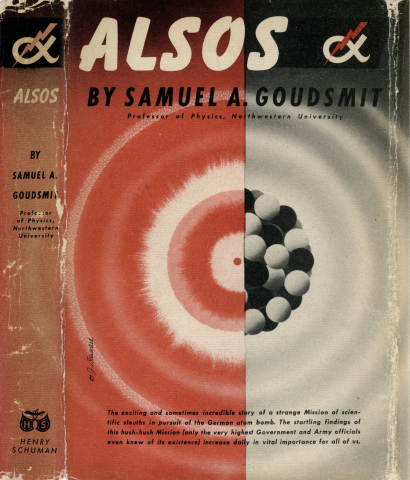Alsos

During the final weeks of World War II in Europe, as Allied armies swept across a chaotic, battle-torn Germany, two teams of the world's leading nuclear scientists were desperately at work. One team, sequestered in the New Mexican desert, hastened to assemble the atomic bombs that would shake the world later that summer. The other team, a group of Nazi-sponsored physicists and technicians in southern Germany, struggled to do something that, unbeknownst to them, the Allies had done two years earlier: build a critical, self-sustaining nuclear reactor.
Meanwhile, a different kind of team was running its own race against time. Convinced (erroneously) that the Germans were close to creating their own superweapon, the Allies sent an American unit of scientists, soldiers, and secret agents established by Lieutenant General Leslie R. Groves into Nazi Germany. Their orders: find the German scientific team before they could provide Hitler with atomic power. The scientific head of the mission: a Dutch-American physicist named Samuel A. Goudsmit. The mission code name: Alsos.
As his small entourage moved closer to the German research camp, Goudsmit revisited familiar people and places now changed forever by the war. The first Allied scientist to interrogate the captured physicists, Goudsmit heard first hand about life in a Nazi Germany in which they had lived and worked for over a decade. Most importantly, as the last person to review German nuclear research papers before military classification barred them from the public eye, Goudsmit was uniquely qualified to answer the most puzzling question: why, after their spectacular early successes, did German nuclear research efforts fall so miserably? Goudsmit's insights into the errors and hindrances that frustrated the German scientists, as well as his penetrating character analyses, remain uncannily accurate, as proven a half-century later by the now de-classified documents.